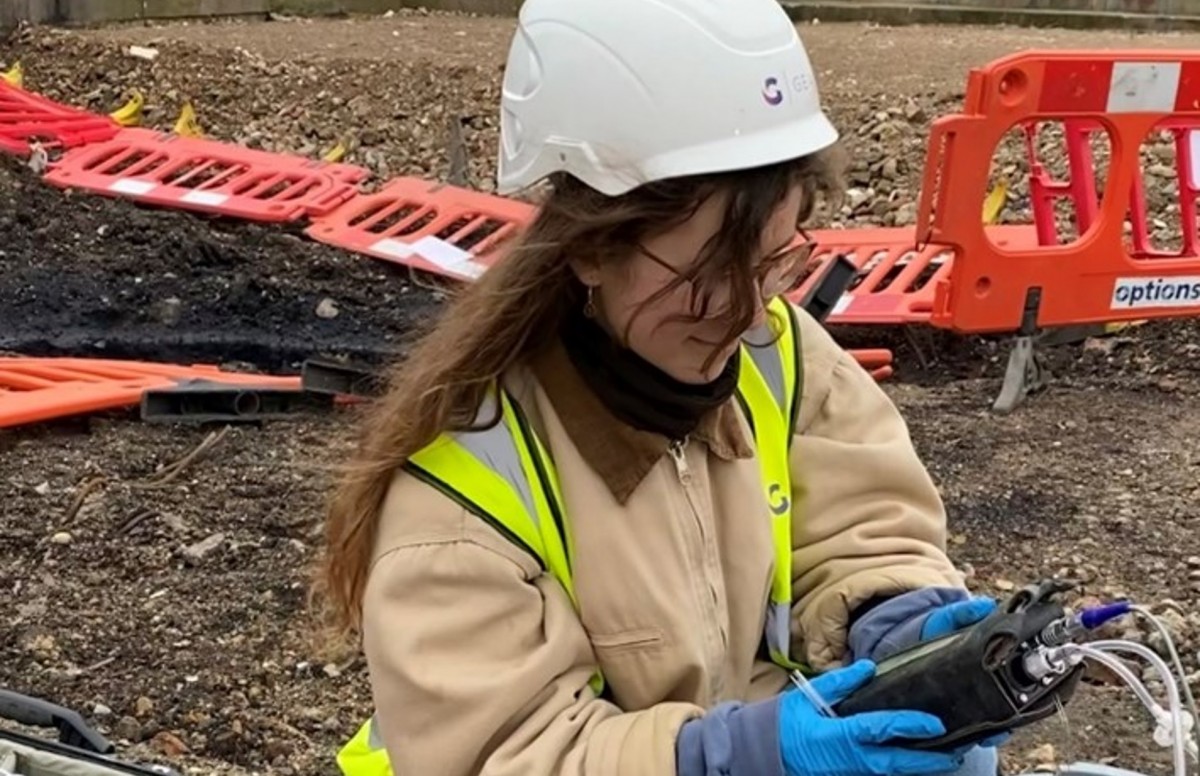Geotheta Things To Know Before You Get This
Table of ContentsThe Of GeothetaIndicators on Geotheta You Should KnowGet This Report on GeothetaSee This Report on GeothetaThe 7-Minute Rule for Geotheta

They perform website investigations, gather examples, perform research laboratory examinations, and analyze information to evaluate the suitability of the ground for building jobs - Tailings Engineer. Based upon their searchings for, geotechnical designers supply recommendations for structure style, slope stability, retaining structures, and reduction of geotechnical hazards. They collaborate with other specialists, such as designers, architectural designers, and construction groups, to ensure that geotechnical factors to consider are integrated into the general project design and implementation
By examining the behavior and residential or commercial properties of soil and rock, they can recognize potential geotechnical risks such as landslides, dirt settlement, or incline instability. Their know-how aids avoid failures or mishaps that could threaten lives and residential or commercial property. Below are some in-depth tasks and responsibilities of a geotechnical engineer: Website Investigation: Geotechnical engineers conduct website investigations to collect data on subsurface conditions.
They interpret the information to comprehend the residential or commercial properties and behavior of the soil and rock, including their strength, permeability, compaction attributes, and groundwater problems. Geotechnical Evaluation and Layout: Geotechnical engineers analyze the information collected throughout website examinations to assess the security and viability of the site for construction jobs. They do geotechnical computations and modeling to review variables such as birthing capacity, negotiation, slope stability, lateral planet pressures, and groundwater flow.
Geotheta - The Facts
Structure Style: Geotechnical designers play an essential role in developing structures that can securely support the designated structure. They evaluate the soil problems and lots demands to identify the ideal structure kind, such as shallow structures (e.g., grounds), deep structures (e.g (https://geotheta.edublogs.org/2024/08/02/unlocking-the-world-of-geotechnical-engineers-with-geotheta/)., heaps), or specialized techniques like dirt renovation. They take into consideration elements such as settlement restrictions, bearing ability, and soil-structure interaction to create ideal structure styles
They examine building and construction plans, monitor site activities, and perform field evaluations to verify that the design suggestions are followed. If unexpected geotechnical problems emerge, they examine the scenario and provide referrals for removal or adjustments to the style. Danger Assessment and Reduction: Geotechnical designers evaluate geotechnical dangers and threats connected with the task website, such as landslides, liquefaction, or soil disintegration.

Collaboration and Communication: Geotechnical engineers function carefully with various other specialists involved in a job, such as engineers, architectural engineers, and building groups. Reliable communication and partnership are important to integrate geotechnical factors to consider into the total task style and building and construction procedure. Geotechnical engineers supply technological proficiency, answer questions, and make sure that geotechnical requirements are satisfied.
The 30-Second Trick For Geotheta
Below are some types of geotechnical engineers: Foundation Designer: Structure engineers concentrate on developing and analyzing foundations for structures. They analyze the soil conditions, lots requirements, and site qualities to determine the most appropriate structure kind and design, such as shallow foundations, deep foundations, or specialized methods like stack structures.
They review the aspects affecting incline stability, such as soil residential properties, groundwater problems, and incline geometry, and establish strategies to stop incline failings and reduce risks. Quake Designer: Quake designers focus on assessing and making structures to endure seismic forces. They evaluate the seismic hazard of a website, assess dirt liquefaction possibility, and establish seismic style requirements to ensure the safety and security and durability of frameworks throughout quakes.
They perform area screening, accumulate samples, and evaluate the accumulated data to characterize the dirt residential properties, geologic developments, and groundwater conditions at a site. Geotechnical Instrumentation Engineer: Geotechnical instrumentation designers focus on monitoring and measuring the habits of soil, rock, and frameworks. They set up and maintain instrumentation systems that keep track of factors such as dirt settlement, groundwater levels, slope movements, and architectural displacements to analyze performance and offer very early warnings of prospective issues.
Some Known Incorrect Statements About Geotheta
They conduct examinations such as triaxial examinations, loan consolidation tests, direct shear tests, and permeability tests to gather information for geotechnical analysis and design. Geosynthetics Designer: Geosynthetics designers focus on the layout and application of geosynthetic materials, such as geotextiles, geogrids, and geomembranes. They make use of these materials to enhance soil security, enhance inclines, provide drain remedies, and control erosion.
They often tend to be investigative individuals, which implies they're intellectual, introspective, and curious. They are interested, systematic, sensible, analytical, and sensible. Some of them are also social, suggesting they're kind, charitable, cooperative, individual, caring, valuable, compassionate, tactful, and helpful site friendly - Tailings Engineer.
In the office environment, geotechnical designers make use of specialized software tools to do computations, create layouts, and examine information. They prepare reports, review task specifications, connect with customers and team participants, and coordinate task activities. The office setup supplies a conducive setting for research study, evaluation, and collaboration with various other experts entailed in the project.
Geotheta Fundamentals Explained
They frequently see project websites to perform site investigations, evaluate geotechnical problems, and gather data for analysis. These brows through entail traveling to various locations, often in remote or challenging surfaces. Geotechnical designers may execute soil sampling, conduct examinations, and monitor construction tasks to make sure that the geotechnical facets of the task are being carried out appropriately.
Geotechnical engineers also operate in specialized geotechnical labs. In these facilities, they perform experiments, carry out examinations on dirt and rock samples, and assess the engineering residential properties of the materials. Geotechnical laboratory engineers work extensively in these atmospheres, taking care of testing equipment, operating instruments, and recording data. They collaborate with various other laboratory team to ensure exact and dependable testing results.